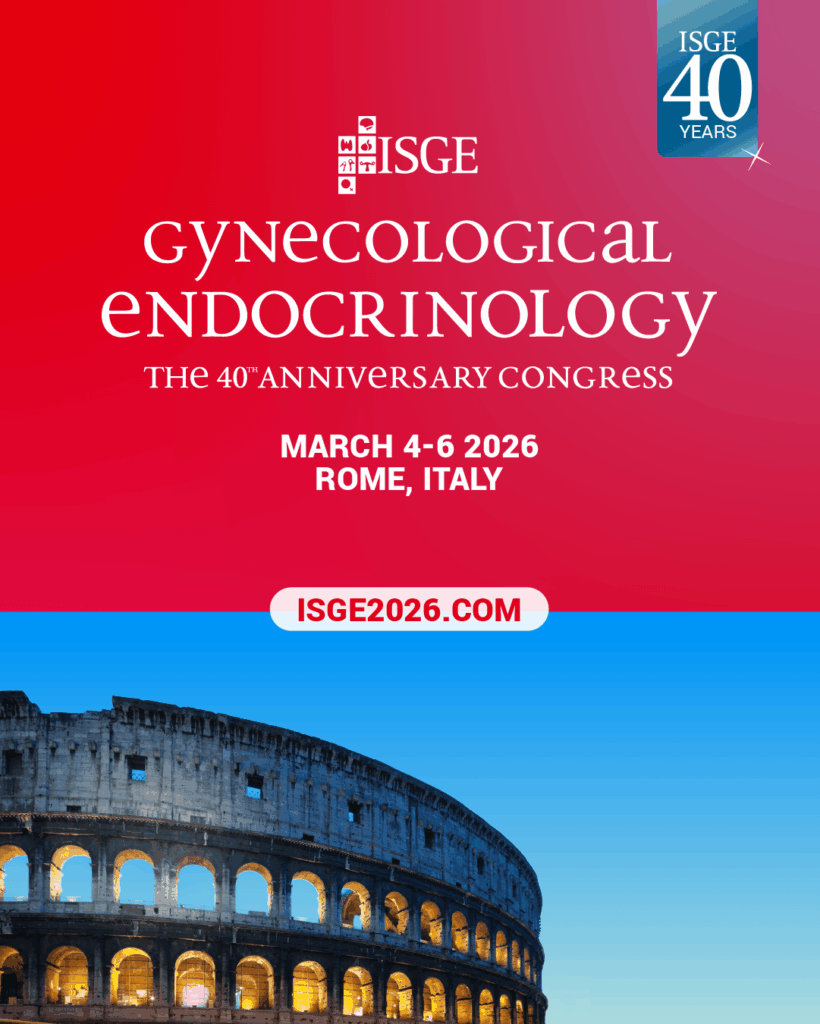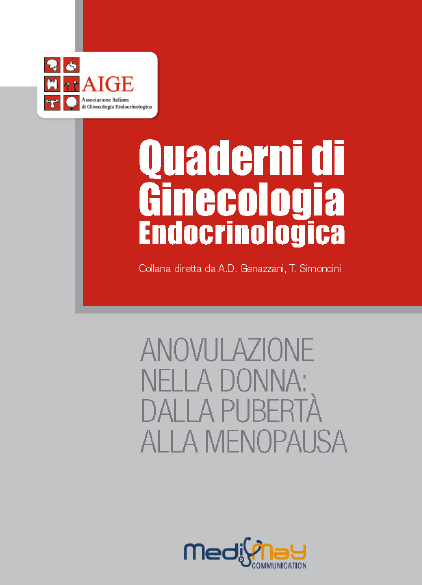-
Louise Lind Schierbeck, Lars Rejnmark, Charlotte Landbo Tofteng, Lis Stilgren Pia Eiken, Leif Mosekilde, Lars Køber, Jens-Erik Beck Jensen.
Effect of hormone replacement therapy on cardiovascular events in recently postmenopausal women: randomised trial.
BMJ 2012;345:e6409 doi: 10.1136/bmj.e6409
Abstract
Objective To investigate the long term effect of hormone replacement therapy on cardiovascular outcomes in recently postmenopausal women.
Design Open label, randomised controlled trial.
Setting Denmark, 1990-93.
Participants 1006 healthy women aged 45-58 who were recently postmenopausal or had perimenopausal symptoms in combination with recorded postmenopausal serum follicle stimulating hormone values. 502 women were randomly allocated to receive hormone replacement therapy and 504 to receive no treatment (control). Women who had undergone hysterectomy were included if they were aged 45-52 and had recorded values for postmenopausal serum follicle stimulating hormone.
Interventions In the treatment group, women with an intact uterus were treated with triphasic estradiol and norethisterone acetate and women who had undergone hysterectomy received 2 mg estradiol a day. Intervention was stopped after about 11 years owing to adverse reports from other trials, but participants were followed for death, cardiovascular disease, and cancer for up to 16 years. Sensitivity analyses were carried out on women who took more than 80% of the prescribed treatment for five years.
Main outcome measure The primary endpoint was a composite of death, admission to hospital for heart failure, and myocardial infarction.
Results At inclusion the women on average were aged 50 and had been postmenopausal for seven months. After 10 years of intervention, 16 women in the treatment group experienced the primary composite endpoint compared with 33 in the control group (hazard ratio 0.48, 95% confidence interval 0.26 to 0.87; P=0.015) and 15 died compared with 26 (0.57, 0.30 to 1.08; P=0.084). The reduction in cardiovascular events was not associated with an increase in any cancer (36 in treated group v 39 in control group, 0.92, 0.58 to 1.45; P=0.71) or in breast cancer (10 in treated group v 17 in control group, 0.58, 0.27 to 1.27; P=0.17). The hazard ratio for deep vein thrombosis (2 in treated group v 1 in control group) was 2.01 (0.18 to 22.16) and for stroke (11 in treated group v 14 in control group) was 0.77 (0.35 to 1.70). After 16 years the reduction in the primary composite outcome was still present and not associated with an increase in any cancer.
Conclusions After 10 years of randomised treatment, women receiving hormone replacement therapy early after menopause had a significantly reduced risk of mortality, heart failure, or myocardial infarction, without any apparent increase in risk of cancer, venous thromboembolism, or stroke.
-
David R. Meldrum
Aging gonads, glands, and gametes: immutable or partially reversible changes?
Fertil Steril 2013;99:1–4
Abstract
Decreased ovarian testosterone production, granulosa cell dysfunction, oocyte telomere shortening and mitochondrial defects, and sperm DNA fragmentation all contribute to reproductive aging. Maneuvers aimed at correcting these abnormalities, including reduction of oxidative stress, improved lifestyle and nutrition, and the role of supplements, are reviewed.
-
Carla Tatone, Fernanda Amicarelli
The aging ovary—the poor granulosa cells
Fertil Steril 2013;99:12–7
Abstract
The development of a competent oocyte intimately depends on the maintenance of energetic homeostasis in the ovarian and follicular microenvironment. On this basis, it is very likely that the oocyte ages as the ovary ages. Starting from the molecular evidence for energy perturbations in the whole ovary, we review current knowledge on the involvement of endogenous highly reactive metabolites in follicle aging. The first part provides an update of recent findings that confirm the key role of oxidative stress in aged granulosa cells. The second
part focuses on studies providing evidence for the implication of advanced glycation end product (AGE) in aging reproductive dysfunction.
With their prolonged half-life and ability to act as signaling molecules AGEs may gradually accumulate in the ovary and potentiate the wide spatiotemporal spread of oxidative stress. Clinical evidence for this view supports the hypothesis that AGE is a good candidate as a predictive marker and therapeutic target in new strategies for improving reproductive counseling in aging women.
-
Sun-Wei Guo, Xiaoyan Mao, Qingliang Ma, Xishi Liu
Dysmenorrhea and its severity are associated with increased uterine contractility and overexpression of oxytocin receptor (OTR) in women with symptomatic adenomyosis
Fertil Steril 2013;99:231–40
Abstract
Objective: To evaluate uterine contractility, oxytocin receptor (OTR) expression in myometrial smooth muscle cells (MSMCs) derived from uterine tissues from women with and without adenomyosis correlate OTR expression with uterine contractility and dysmenorrhea severity, and see whether trichostatin A (TSA) and andrographolide inhibit OTR expression.
Design: Laboratory study using human tissues.
Setting: Academic hospital.
Patient(s): Twenty patients (cases) with histologically confirmed adenomyosis and 10 (controls) with leiomyomas, cervical dysplasia, and cancer but no adenomyosis or endometriosis.
Intervention(s): Dysmenorrhea severity was scored by Visual Analog Scale. Uterine tissue samples were collected during hysterectomy. Myometrial smooth muscle cells derived from tissue samples were cultured and OTR protein levels were measured. The effect of TSA (0.5 or 1 mM) and andrographolide (15 or 30 mM) on OTR expression was evaluated.
Main Outcome Measure(s): Visual Analog Scale scores, and contractile amplitude and frequency. The OTR protein levels in MSMCs were quantified by Western blot analysis.
Result(s): The contractile amplitude and OTR expression levels were significantly higher in cases than in controls. Dysmenorrhea Visual Analog Scale scores correlated positively with contractile amplitude and OTR expression level. Both TSA and andrographolide dose-dependently inhibit OTR expression in MSMC.
Conclusion(s): Oxytocin receptor overexpression in MSMCs may be responsible for increased uterine contractility and adenomyosisassociated dysmenorrhea. Both histone deacetylase inhibitors and andrographolide are
therapeutically promising.
-
Theodoros Kalampokas, George Creatsas & Emmanouil Kalampokas
Cabergoline as treatment of ovarian hyperstimulation syndrome: a review
Gynecological Endocrinology, 2013; 29(2): 98–100
Abstract
One of the most serious complications of assisted reproduction techniques is ovarian hyperstimulation syndrome (OHSS). OHSS not only increases morbidity and mortality in IFV cycles, but also causes significant other problems, as cancelled in vitro fertilization (IVF) cycles, prolonged hospitalization, causing emotional and sociofinancial consequences. Several treatments for OHSS
have been proposed and among these Cabergoline (Cb2).
Despite the above-mentioned beneficial effect, Cb2 has not been widely used in everyday’s clinical practice. With our study, we try to review all studies with strong evidence examining Cb2 use for OHSS prevention.
-
Carlo Campagnoli, Chiara Abbà, Simona Ambroggio, Tiziana Brucato, Patrizia Pasanisi
Life-style and metformin for the prevention of endometrial pathology in postmenopausal women
Gynecological Endocrinology, 2013; 29(2): 119–124
Abstract
In western women, the endometrium is frequently exposed, even after menopause, to the endogenous hormonal stimulation. Such a stimulation increases the risk of pathologic conditions such as endometrial hyperplasia and type I (endometrioid) endometrial adenocarcinoma. Metabolic syndrome, obesity, insulin resistance and type II diabetes promote the endometrial stimulation, and are recognized risk factors for endometrial cancer. Furthermore, chronic hyperinsulinemia linked both to obesity and metabolic syndrome influences endometrial proliferation through direct and indirect actions. Intentional weight loss, calorie restriction and physical activity are associated with a reduced risk of the endometrial pathology. Biological mechanisms include reduction in insulin and sex steroid hormone levels. In addition to life-style modifications, the antidiabetic metformin may be proposed as preventive agent. Metformin reduces the metabolic syndrome, lowers insulin and testosterone levels in postmenopausal women, and it is a potent inhibitor of endometrial cancer cell proliferation.
-
Yelda Baci, Işık Üstüner, Hüseyin Levent Keskin, Reyhan Ersoy, Ayşe Filiz Avşar
Effect of maternal obesity and weight gain on gestational diabetes mellitus
Gynecological Endocrinology, 2013; 29(2): 133–136
Abstract
The aim of the study is to evaluate the association between gestational diabetes mellitus (GDM) and maternal obesity and weight gain during pregnancy. A prospective cohort study screened 614 consecutive gravid patients for GDM using 50 g glucose challenge test (GCT). The pregnant women were divided into 4 groups according to their prepregnancy body mass index (BMI). Group I, II, III and IV constituted when the BMI < 18.5 kg/m2 (n = 16), 18.5–24.9 kg/m2 (n = 455), 25–29.9 kg/m2 (n = 122),and >30 kg/m2 (n = 21) respectively. All the pregnant womenwere also evaluated in terms of their weight gain during pregnancy and these cases were recruited in 3 groups as low, ideal and high weight gain groups. Overall, a positive 50 g GCT result was identified in 106/614 (17.8%) women. GDM was further diagnosed in 12/614 (1.95%) of subjects. The prevalence of GDM in Group II, III and IV was 1.31%, 3.28% and 9.52% respectively (p < 0.05). The cases of Group II in first and second trimester and Group III only in second trimester showed statistically significant positive results of 50 g GCT when they had excess weight gain compared to the ones whose weight gain were in normal range. Women planning pregnancy should be educated about the disadvantages of obesity, being over-weight and should be advised to have an ideal prepregnancy BMI and ideal weight gain during pregnancy.
-
Ismail Cem Yildir, Faruk Kutluturk, Turker Tasliyurt, Berna Murat Yelken, Berat Acu, Murat Beyhan, Unal Erkorkmaz, Abdulkerim Yilmaz
Insulin resistance and cardiovascular risk factors in women with PCOS who have normal glucose tolerance test
Gynecological Endocrinology, 2013; 29(2): 148–151
Abstract
Introduction: We aimed to determine the insulin resistance in women with PCOS patients who have normal oral glucose tolerance test (OGTT) and to evaluate cardiovascular risk by measuring C-reactive protein (CRP) and carotid intimae-media thickness (CIMT).
Methods: A total of 34 patients and age and body mass matched 20 healthy control subjects were included to this prospective study. Both of patients and control groups were consisted of normal oral glucose tolerance test. Insulin resistance (IR) was estimated using HOMA-IR method. CRP, lipid and hormone levels were measured. CIMT was measured by Carotid Artery B-Mode ultrasonography.
Results: There was no significant difference between patients and controls in BMI, and waist circumference, lipid, TSH, LH, FSH, estradiol, and prolactin levels. Serum insulin, testosterone, DHEAS, ferritin levels and HOMA values were significantly higher in patient group. We found that 64.7% (n = 22/34) patients with PCOS had insulin resistance. Both of CIMT and CRP levels were significantly higher in the PCOS patients had BMI over 25 kg/m2. CRP levels was significantly higher in the PCOS patients had waist circumference greater than 80 cm. Conclusion: We found insulin resistance in the women with PCOS even if OGTT was normal. Our data were similar to literature, the women with PCOS have increased risk of premature atherosclerosis and metabolic syndrome.
-
P.E. Levi Setti, E. Albani, M. Matteo, E. Morenghi, E. Zannoni, A.M. Baggiani, V. Arfuso, P. Patrizio
Five years (2004–2009) of a restrictive law-regulating ART in Italy significantly reduced delivery rate: analysis of 10 706 cycles
Hum. Reprod. (2013) 28(2): 343-349
Abstract
STUDY QUESTION Was the delivery rate of ART cycles negatively affected by the enactment of the Law 40/2004 by the Italian Parliament which imposed a long list of restrictions for ART procedures?
SUMMARY ANSWER This large and extensive comparative analysis of ART outcomes prior to and after the introduction of the Law 40 revealed a significant reduction in pregnancy and delivery rates per cycle, independent of age or other clinical variables, once the law went into effect.
WHAT IS KNOWN ALREADY Several studies have been published on the effect of Law 40/2004 on ART outcomes, some authors demonstrating a negative impact of the Law in relation to specific etiologies of infertility, other authors showing opposite conclusions.
STUDY DESIGN, SIZE, DURATION Retrospective clinical study of 3808 patients treated prior to the enactment of the Law, September 1996–March 2004 (Group I) and 6898 treated during the Law, March 2004–May 2009 (Group II).
PARTICIPANTS/MATERIALS, SETTING, METHODS A total of 10 706 ART cycles were analysed, 3808 performed before and 6898 after the application of the Law. An intention-to-treat statistical analysis was performed to detect pregnancy and delivery rates (pregnancies ≥24 weeks) per started cycle. A P value of < 0.05 was considered statistically significant. We analysed different outcomes: differences in fertilization, pregnancy and delivery rate, multiple pregnancies and miscarriage rates between the two time periods.
MAIN RESULTS AND THE ROLE OF CHANCE The delivery rate for started cycle was 20% before and 16.0% after the introduction of the Law representing a 25% reduction (P < 0.001). The multivariate analysis, corrected by female age of >38 years, duration of infertility, basal FSH level and number of retrieved oocytes, showed a 16% lower delivery rate (odds ratio: 0.84; confidence interval: 0.75–0.94). This statistical approach removed the risk that the observed effects were due to chance and confirmed unequivocally that the Law was an independent factor responsible for the reduced likelihood of a successful outcome.
LIMITATIONS, REASONS FOR CAUTION This is a retrospective study. A prospective randomized study, with patients treated in the same time period and randomized to restrictions or not, would have minimized potential limitations due to differences in years of treatments.
WIDER IMPLICATIONS OF THE FINDINGS Our findings based on the analysis of such a large number of cycles proved clearly and unequivocally that imposing restrictions on the practice of ART penalized patients. These data represent a relevant clinical contribution for countries still debating the enactment of restrictive limitations of ART.
STUDY FUNDING/COMPETING INTEREST This investigation has been supported by a finalized grant from Lombardy County, Italy (DGR 7255, 3 July 2008)
-
Nicolas Galazis, Thalia Afxentiou, Mikalena Xenophontos, Evanthia Diamanti-Kandarakis, William Atiomo
Proteomic biomarkers of type 2 diabetes mellitus risk in women with polycystic ovary syndrome
European Journal of Endocrinology 2013, 168: R33–R43
Abstract
Women with polycystic ovary syndrome (PCOS) are at increased risk of developing insulin resistance and type 2 diabetes mellitus (T2DM). In this study, we attempted to list the proteomic biomarkers of PCOS and T2DM that have been published in the literature so far. We identified eight common biomarkers that were differentially expressed in both women with PCOS and T2DM when compared with healthy controls. These include pyruvate kinase M1/M2, apolipoprotein A-I, albumin, peroxiredoxin 2, annexin A2, a-1-B-glycoprotein, flotillin-1 and haptoglobin. These biomarkers could help improve our understanding of the links between PCOS and T2DM and could be potentially used to identify subgroups of women with PCOS at increased risk of T2DM. More studies are required to further evaluate the role these biomarkers play in women with PCOS and T2DM.
-
Annette Mouritsen, Lise Aksglaede, Kaspar Soerensen, Casper P Hagen, J H Petersen, Katharina M Main, Anders Juul
The pubertal transition in 179 healthy Danish children: associations between pubarche, adrenarche, gonadarche, and body composition
Eur J Endocrinol 2013, 168: 129-136
Abstract
Background Pubertal onset is usually defined by breast development in girls and testicular growth in boys. Pubarche is defined as the attainment of pubic hair and is considered as a sign of pubertal transition. Pubarche is preceded by a gradual increase in production of adrenal androgens, DHEA and Δ4-androstenedione (Adione), a process termed adrenarche.
Objective To study the natural course of pubertal transition and the associations with adrenarche, body fat, and linear growth.
Design and methods A longitudinal study of 179 healthy children (89 girls) with higher socioeconomic background examined every 6 months for 5 years. Pubic hair stage, breast stage, genital stage, testicular volume (TV), height, weight, and four skinfolds were measured.
Results In girls, median age (25th and 75th percentiles) at thelarche (B2+) was 10.1 years (9.3–10.9). In boys, median age at attaining a TV >3 ml was 11.5 years (10.9–12.0). Median age at pubarche (PH2+) was 10.9 years (10.3–11.4) in girls and 11.6 years (10.8–12.4) in boys. Only 6.8% (4/59) of the girls and 24.6% (15/61) of the boys developed pubic hair as the first isolated sign of puberty. Serum DHEAS and Adione increased with age, although the increase in Adione was most pronounced in girls. No associations between early age at thelarche/testicular growth and increased body fat (BMI and sum of four skinfolds) were observed.
Conclusion Danish children rarely experience pubarche as the first sign of puberty. No associations between age at pubertal onset and body composition were found. Circulating levels of Adione, but not DHEAS, increased with the onset of puberty, although with large interindividual variability.
-
Subbulaxmi Trikudanathan, Alison Pedley, Joseph M. Massaro, Udo Hoffmann, Ellen W. Seely, Joanne M. Murabito, Caroline S. Fox
Association of Female Reproductive Factors with Body Composition: The Framingham Heart Study
J Clin Endocrinol Metab 98: 236–244, 2013
Abstract
Background: Identifying reproductive risk factors inwomenoffers a life course approach to obesity and cardiovascular disease prevention. The association of female reproductive factors with measures of regional body fat distribution has not been comprehensively studied.
Methods: We examined the association of female reproductive factors (age at menarche, parity, age at natural menopause, menopausal status) in association with body composition data from women who participated in the Offspring and the Third Generation Framingham Heart Study cohorts. Visceral adipose tissue (VAT) and sc adipose tissue (SAT) were measured volumetrically by multidetector computerized tomography. We modeled the relationship between each fat depot and female reproductive factors after adjusting for various factors such as age, smoking status, alcohol intake, physical activity index, hormone replacement therapy, and menopausal status.
Results: Earlier age at menarche was associated with increased body mass index (BMI), waist circumference (WC), VAT, and SAT (P < 0.0001). This association of earlier menarche with adiposity measures was attenuated after adjusting for BMI (all P > 0.70).Weobserved no association between parity and all parameters of adiposity measurements (all P>0.24). Similarly, age at natural menopause was not associated with measures of body composition. Despite higher mean BMI among the post- (BMI 27.3 kg/m2) compared with the premenopausalwomen(BMI 25.9 kg/m2) in an age-matched analysis,mean VAT was not different between the two groups (P= 0.30).
Conclusions: Earlier menarche is associated with overall obesity but not with VAT or SAT after
accounting for measures of generalized adiposity. Parity and menopausal age were not associated with adiposity measures. Although postmenopausal women had increased BMI, VAT, and SAT, the association was predominantly due to age.






